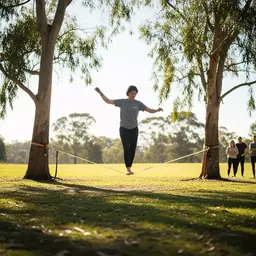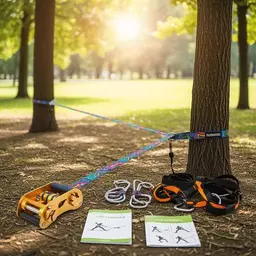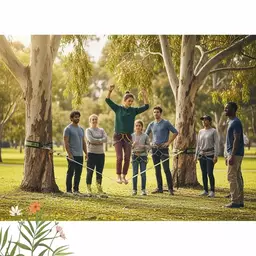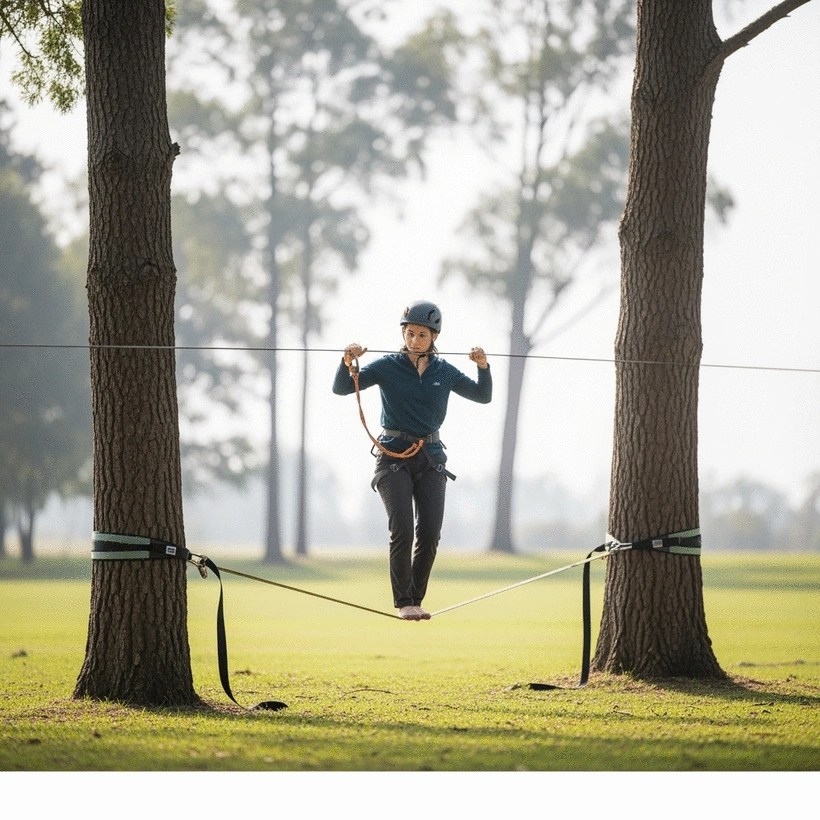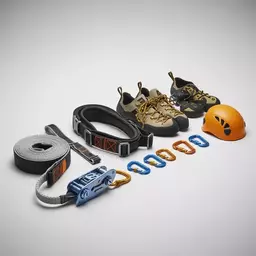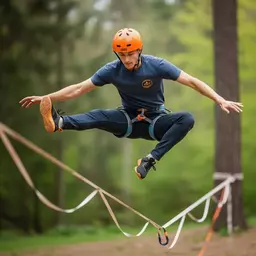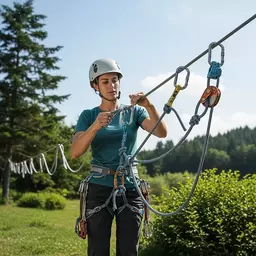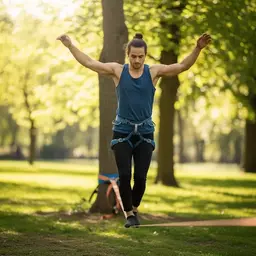Slackline Safety Setup Guide
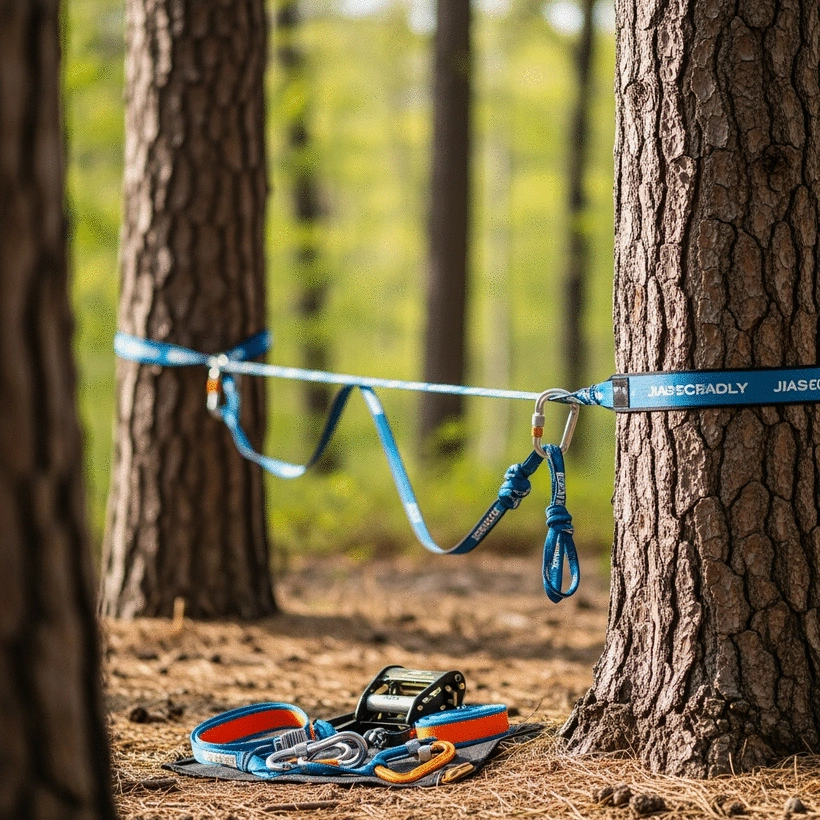
As a slacklining enthusiast, the foundation of your experience lies in safety. The right precautions can enhance your confidence and enjoyment while minimizing risks. Here are the key takeaways you'll glean from mastering slackline safety essentials.
What You Will Learn
- Understanding the critical importance of safety in slacklining for confidence and performance.
- The value of a safety setup checklist to ensure meticulous preparation before each session.
- Key guidelines for equipment inspection, including identifying wear and tear on slackline gear.
- Best practices for assessing your environment to ensure a stable and safe slacklining setup.
- Essential safety tips to maintain a supportive slacklining community and culture.
Slackline Safety Setup: A Crucial Checklist
Ensuring safety is paramount when slacklining. This visual outlines the critical steps and components for a secure and enjoyable experience. For a more detailed guide on initial setup, refer to our slackline setup for beginners guide.
Importance of a Safety Setup Checklist
Benefit 1: Prevent Accidents
Minimizes risk of injury by systematic checks.
Benefit 2: Boost Confidence
Secure setup allows focus on skill development.
Equipment Inspection
Key Components:
• Slackline: Check for fraying, tears.
• Anchors: Ensure robustness, security.
• Ratchets: Examine for smooth operation, wear.
Signs of Wear:
• Frayed edges on slackline.
• Rust on metal parts (ratchets, carabiners).
• Unusual creaks/movements during setup.
Environment Assessment
Ground Conditions:
• Ideal: Soft, flat surfaces.
• Avoid: Rocky, uneven terrain, obstacles.
"Soft, level surface makes a huge difference."Anchoring & Clearance:
• Sturdy trees/posts for anchoring.
• Min. 1 meter ground clearance.
• Adjust length to skill level.
Key Safety Tips Recap
Inspect Gear & Environment
Secure Anchors & Tension
Understanding Slackline Safety Essentials
When it comes to slacklining, safety is not just a guideline; it’s a necessity! At Slackline Shop Australia, we recognize that a strong foundation in safety practices is crucial for anyone looking to enjoy this thrilling sport. Whether you're a beginner or an experienced slackliner, understanding these essentials can help prevent accidents and enhance your overall experience.
So, why does safety matter so much in slacklining? The simple truth is that it directly impacts your confidence and performance. Knowing that you have implemented proper safety protocols allows you to focus on mastering your balance rather than worrying about potential hazards. Let's explore why safety should always be your number one priority!
Why Safety Matters in Slacklining
In slacklining, safety is paramount; it’s what keeps you upright and confident! Every time you step onto that line, the risks increase. Falling isn't just part of the sport—it's a reality. That's why understanding the principles of safety is essential. For more detailed slackline safety tips for beginners, check out our dedicated guide.
- Prevention: Proper safety measures help avoid injuries, ensuring you can keep practicing.
- Confidence: Knowing that your setup is secure allows you to push your limits without fear.
- Community: Following safety guidelines fosters a culture of responsibility among slackliners.
Incorporating safety into your slacklining routine isn't just about protecting yourself—it's about nurturing a supportive environment for everyone involved. When we prioritize safety, we can all enjoy the thrill of this beautiful sport!
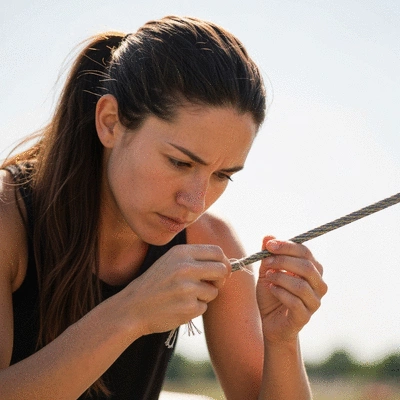
The Importance of a Safety Setup Checklist
Before you embark on your slacklining journey, having a safety setup checklist is invaluable. It acts as your guide, ensuring you don’t overlook any critical components during your preparations.
- Inspect your gear for any signs of wear.
- Choose a safe and suitable location for your setup.
- Double-check your anchoring points.
By following a checklist, you can systematically go through each step, minimizing the risk of accidents. It’s a small effort that can lead to significant safety outcomes!
Overview of Safety Guidelines and Standards
At Slackline Shop Australia, we advocate for adhering to recognized safety guidelines. These standards are designed to protect slackliners and enhance the overall experience.
- Always use high-quality slackline equipment certified for safety.
- Engage with established communities to stay updated on safety best practices.
- Educate yourself about the specific safety regulations in your region.
Understanding and implementing these guidelines can drastically reduce risks and improve your skills on the slackline. Remember, safety isn't just about following rules—it's about creating an enjoyable, worry-free environment for everyone!
Crucial Safety Checks Before Setup
Now that we’ve laid the groundwork, let’s dive into the crucial safety checks before you set up your slackline! These checks are vital to ensuring that your experience is both safe and enjoyable.
- Conduct thorough inspections of your equipment.
- Assess the setup environment carefully.
- Make necessary adjustments based on your observations.
Taking the time for a comprehensive check can make all the difference. Let’s explore how to effectively conduct these checks!
Conducting Equipment Inspections
The first step in ensuring your safety is to conduct a detailed inspection of all your slacklining equipment. This will help you identify if anything is damaged or needs replacing.
Key Components to Examine
When inspecting your slackline setup, pay close attention to the following components:
- Slackline itself: Check for fraying or tears.
- Anchors: Ensure they are robust and secure.
- Ratchets: Examine for smooth operation and wear.
By routinely checking these components, you can prevent accidents and enjoy your time on the line much more!
Identifying Wear and Tear
Recognizing signs of wear and tear is key to maintaining your equipment. Look for:
- Frayed edges on the slackline.
- Rust on metal parts such as ratchets and carabiners.
- Any unusual creaks or movements during setup.
If you find any issues, don’t hesitate to replace that gear. Your safety depends on it!
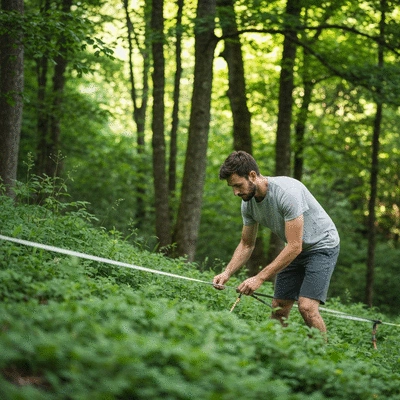
Assessing the Setup Environment
Next, let’s talk about evaluating the environment where you’ll be slacklining. The right location can significantly enhance your safety.
Ground Conditions and Stability
Before setting up, inspect the ground conditions. Here’s what to look for:
- Soft, flat surfaces are ideal.
- Avoid rocky or uneven terrain to reduce the risk of falls.
- Check for any obstacles nearby, such as trees or benches.
Your choice of ground can make a huge difference in your overall experience. It’s always better to practice on a soft, level surface!
Choosing the Right Location for Anchoring
Choosing safe anchoring points is just as important as checking the ground. Here’s how to ensure you anchor properly:
- Look for sturdy trees or posts that can bear weight.
- Avoid using equipment that can be damaged or dislodged.
- Plan your line to minimize the distance from the ground and potential hazards.
Finding the right anchor points will give you peace of mind while you practice your balance!
Understanding Slackline Length and Ground Clearance
Finally, consider the appropriate slackline length and ensure there’s enough ground clearance:
- Longer lines may require more tension and stability.
- Maintain at least 1 meter of clearance from the ground to avoid potential injuries.
- Adjust the slackline length according to your skill level and comfort.
By understanding these factors, you can create a safe environment that encourages progression and fun! Remember, the right setup is critical to enjoying your slacklining adventures.
Interactive Poll: Your Safety Practices
We want to hear from you! How do you ensure safety while slacklining? Select all that apply:
Summarizing Key Safety Tips for Slacklining
As we wrap up our discussion on slackline safety, it's crucial to remember that a few key principles can significantly enhance your experience. By following a structured approach to safety, you not only protect yourself but also make your slacklining journey much more enjoyable. Here’s a quick recap of essential safety tips to keep in mind:
- Always conduct thorough equipment inspections before each session.
- Ensure your setup environment is safe, stable, and suitable for slacklining.
- Use high-quality anchor points and protect trees or other surfaces when needed.
- Apply the correct tension to your slackline to prevent accidents.
- Communicate with others around you about your slacklining activities.
By implementing these safety tips, you'll feel more confident every time you step onto that line. Remember, staying safe is the first step toward mastering your skills and enjoying the thrill of slacklining!
Recap of the Slackline Setup Checklist
Having a reliable setup checklist is vital, especially for beginners. Here's a quick summary to help you remember the critical items:
- Inspect all gear: lines, ratchets, and anchors must be in good condition.
- Choose your location wisely, considering ground stability and clear surroundings.
- Secure your anchors properly to withstand the tension and your movements.
- Adjust the slackline's tension based on your skill level and the line's length.
- Ensure visibility to others and have a buddy to assist if necessary.
This checklist not only serves as a guide but also helps build a habit of prioritizing safety. It’s a small effort for a huge impact on your slacklining experience!
Final Thoughts on Slackline Safety
Safety in slacklining isn’t just about equipment; it’s also about mindset. As someone who has spent years perfecting my slackline skills, I can tell you that understanding safety helps you focus on learning and having fun! Remember, balance and safety go hand in hand.
Each session is an opportunity to learn, so take your time, stay aware of your surroundings, and embrace the thrill of slacklining with confidence. Now that you have the knowledge, it’s time to put it into practice!
Next Steps for Safe Slacklining
Where to Find Quality Slackline Equipment
If you’re ready to invest in quality slackline gear, look no further than Slackline Shop Australia. We offer a variety of products tailored for all skill levels, ensuring you have the best equipment for your journey. Plus, our expert reviews can help guide your purchase decisions! To help you get started, explore our beginner's guide to slackline kits.
- Explore our comprehensive selection of slacklines, from beginner to advanced.
- Check out our recommended gear for safety enhancements.
- Read our detailed reviews to find the perfect fit for your needs.
Don’t hesitate to reach out if you have questions about your purchase—I'm here to help!
Join the Slackline Community for Support and Resources
Joining a community can be incredibly beneficial for your slacklining journey. By connecting with fellow enthusiasts, you gain access to a wealth of knowledge and support. Look for local groups or online forums where you can share experiences, tips, and tricks.
- Participate in local slacklining meetups for hands-on learning.
- Engage in online forums for advice and encouragement.
- Follow social media accounts dedicated to slacklining for inspiration.
The camaraderie within the slacklining community is truly inspiring and can motivate you to push your limits!
Training and Balance Techniques for Beginners
As a beginner, mastering balance techniques is essential for your safety and progression. Here are some effective methods to enhance your skills:
- Practice standing on the slackline while focusing on a fixed point in front of you.
- Engage in core-strengthening exercises to improve your stability.
- Incorporate mindfulness techniques to help maintain concentration.
Remember, every expert was once a beginner! With practice, patience, and the right training techniques, you’ll be surprising yourself in no time. So, lace up your shoes, grab your gear from Slackline Shop Australia, and let’s get balancing!
Frequently Asked Questions About Slackline Safety
- Q: Why is a safety setup checklist important for slacklining?
- A: A safety setup checklist is crucial because it helps systematically verify all components and environmental factors, minimizing the risk of accidents and boosting confidence during practice. It ensures no critical steps are overlooked.
- Q: What are the key components to inspect in slackline equipment?
- A: Key components to inspect include the slackline itself for fraying or tears, anchors for robustness and security, and ratchets for smooth operation and wear. Regular inspection helps identify potential failures before they occur.
- Q: What signs of wear should I look for on my slackline gear?
- A: Look for frayed edges on the slackline, rust on metallic parts like ratchets and carabiners, and any unusual creaks or movements during setup that might indicate damage or weakness. Replace any compromised gear immediately.
- Q: How should I assess the environment before setting up my slackline?
- A: Assess ground conditions for softness and flatness, avoiding rocky or uneven terrain. Choose sturdy trees or posts for anchoring, ensuring at least 1 meter of ground clearance and checking for any nearby obstacles or hazards.
- Q: What is the recommended ground clearance for a slackline?
- A: It is recommended to maintain at least 1 meter of ground clearance from the slackline to avoid potential injuries in case of a fall. The length and tension of the slackline should also be adjusted based on skill level and comfort.
Recap of Key Points
Here is a quick recap of the important points discussed in the article:
- Always conduct thorough equipment inspections before each slacklining session.
- Ensure your setup environment is safe, stable, and suitable for slacklining.
- Use high-quality anchor points and protect trees or other surfaces when needed.
- Apply the correct tension to your slackline to prevent accidents.
- Communicate with others around you about your slacklining activities.
